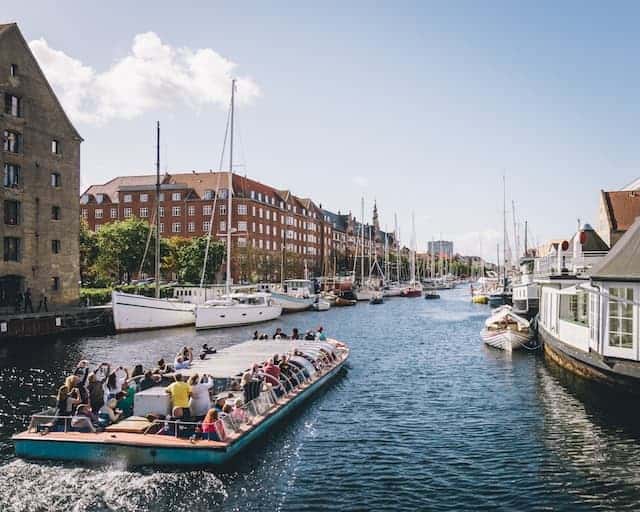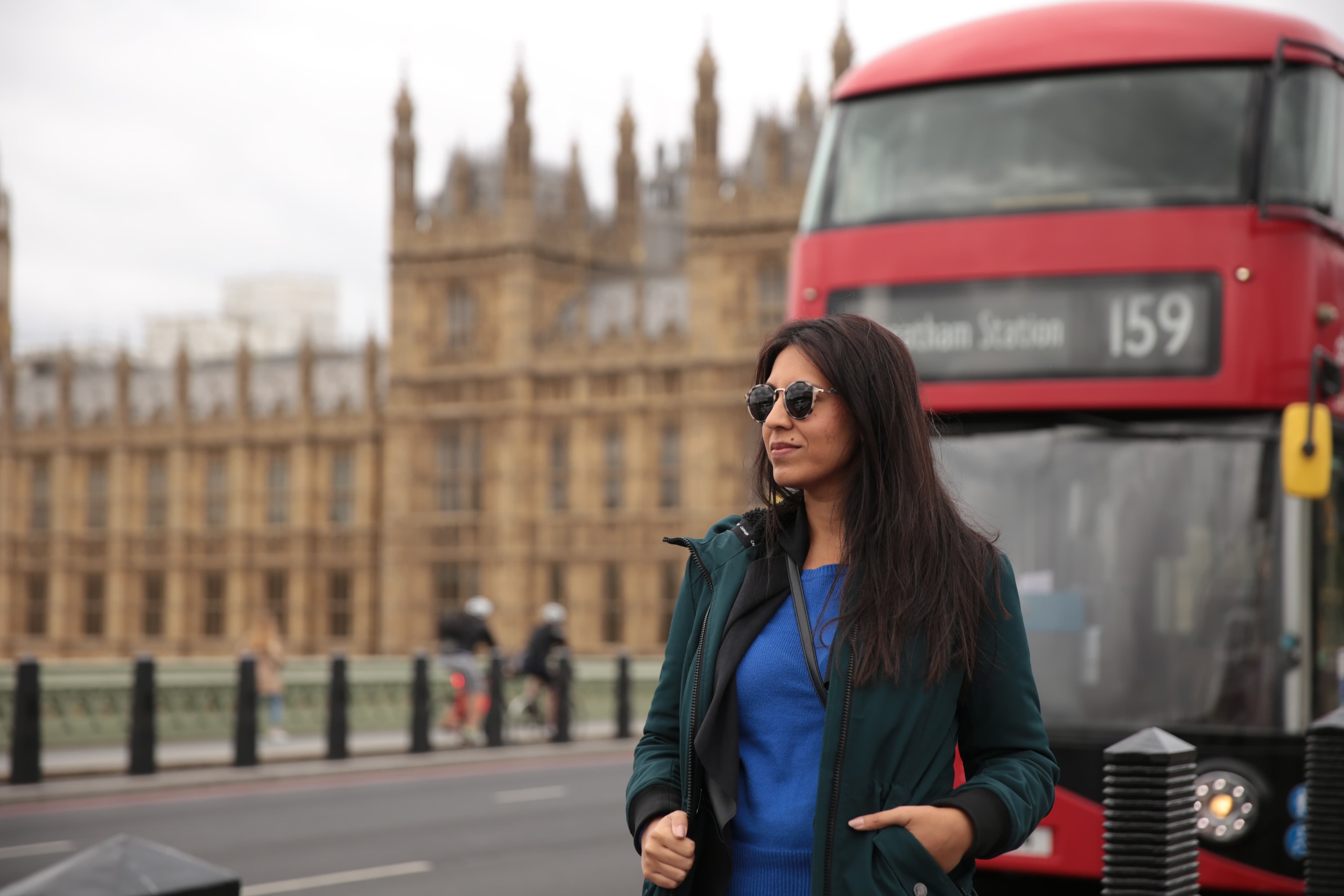17 Best Tips for How to Plan a Solo Trip for First Timers

Wondering how to plan a solo trip you’ll love?
If you’re reading this, it means you’re strongly considering taking your first solo trip. Can we just celebrate you for a moment?! Congrats! As a fellow solo female traveler, I know the rollercoaster of emotion that comes with embarking on a solo trip and I know the ins and outs of how to plan a solo trip the right way.
I have traveled alone all over the world, including to: Japan, Mexico, Costa Rica, Spain, France, Italy, Turkey, Greece and so many more countries. I’ve picked up heaps of useful tips along the way. So, follow my step-by-step guide to planning a bucket list worthy solo trip, below!
- Helpful solo travel resources
- Travel Insurance: SafetyWing
- International eSIM: From Doubtful to Daring
How to Plan a Solo Trip You’ll Love
A solo trip is one of the most empowering and liberating experiences you can have. While solo trip planning takes some work and effort, it’s worthwhile to set yourself up for the best possible adventure.
1. Know yourself

A solo trip is all about you and what you love to do. If you’ve never traveled alone before it might feel unusual or even stressful at first to be making all the decisions yourself.
You might not even realize, until you get into it, how many decisions are involved! To plan a solo trip, start by asking yourself these questions:
What’s my travel style?
Do you prefer to see it all, or move at a leisurely pace? Do you prefer cities, beaches or mountain towns? Warm climates or cool?
What do I want to do?
Do you want to indulge in a great foodie scene? Go on outdoor adventures? Immerse yourself in culture at museums and art galleries? A little bit of everything? Think about what you envision yourself doing on your solo trip that brings you joy.
How much alone time can I handle?
Do you generally do okay with alone time? Or, do you prefer to break up your solo time with opportunities to connect with other people as well?
Answering questions like these will help you plan your solo trip and make decisions that are true to you.
2. Prepare for all the feels
Excitement, fear, overwhelm, peace, joy, anxiousness — you’re likely to feel them all as you prepare for your solo trip. Know that this is normal.
Anytime you step outside of your comfort zone it’s bound to be both exhilarating and terrifying at the same time.
But it’s nearly always worth it. So, push through the scary feelings as they arise and lean into the uplifting ones.
3. Determine your budget
Alright, let’s get into the practical details. Start with calculating your solo trip budget. How much are you willing to spend, total? And how do you want that money to be used?
For example, do you want to spend more money on food while you’re traveling or on your accommodations? More on experiences, or more on shopping?
Use your budget as your anchor point for the decisions to follow — where to go, how long to stay, what to do there, etc.
4. Research where to go and for how long
This is the fun part! Once you’ve gained a sense for your budget and what type of solo trip you’d like to take, you can explore the different destinations that would meet your needs. I like to do this a few different ways:
- Kayak Explore: this tool gives you the option to set your flight budget and type of trip from a list of options that include: city, beach, outdoorsy, foodie and more.
Then, you can drag the map around to the part of the world you’re interested in visiting and see what the options are within your flight budget.
You can also set your desired flight duration. If you’re taking a shorter trip, you probably don’t want to spend hours and hours just to get there! So factor that in as well. - Google Explore: Another great tool is Google Explore. You can set how long you’d like your trip to be, what timeframe you’d like to explore options within, and interests like museums or beaches etc.
- Research: Once you have a sense of what’s most important to you on your solo trip you can also search for destinations and come up with ideas this way.
Potential searches you might look up include:
- Best warm weather destinations in X month
- Most affordable cities to visit
- Safest cities for solo travelers
- Top foodie cities in the US
The options are endless!
5. Get a true pulse for potential destinations

Once you have your shortlist of destinations, or even once you have THE destination in mind, get a true pulse for what things are like there. My favorite way to do this is by joining Facebook groups of people living there.
On Facebook, search for digital nomad / expat groups in X destination. I tend to only do this when I’m visiting an international destination and planning to stay for a while, since I want to understand what living there would be like. But you can search for a variety of groups on Facebook.
Another search to try is ‘solo travelers in X destination.’ Or, join a broader group focused on solo female travel and then search the group or ask a question for insight from people who have solo traveled to your potential destinations.
This is a great way to get a sense of what to expect at the destination and also gives you an opportunity to ask questions 6. Research where to stay
Anytime I’m visiting a new destination as a solo female traveler, safety is top of mind. I always research ‘best neighborhoods to stay in X destination’ before looking for my accommodations. Once you’re in some relevant Facebook groups, this is also a question you can ask directly to get information from people who have first hand experience and know the city well. Research is a big part of how to plan a solo trip, and once you’ve done the legwork it’s time to book! In case it’s helpful, you’ll find all my go-to travel planning and booking resources right here. Once you have your travel and accommodations booked is when the real fun begins. For me, creating my solo trip itinerary is the best part of planning a solo trip. I love reading blogs written by fellow travel bloggers about their experiences and favorite things to do in the destination I’m visiting. Purchasing a city pass lets you see more for less money. I also love signing up for fun group tours when I’m traveling solo. It’s a great way to make new friends, be social and connect with a local guide. There are so many options for tours including food and drink walking tours, cooking classes, bike ride tours, day trips and more. Explore your tour options with GetYourGuide or Viator The way to actually map out your itinerary, as you start finalizing some of these book-in-advance opportunities, is planning 1-2 concrete things per day. Then, leave time to wander or fit in the activities in your if-there’s-time categories into each day. This approach helps to create an itinerary that is not too overwhelming and still fun while leaving room for spontaneity. I used to spend very little time planning where to eat when I traveled. I learned the hard way that was a mistake. You might think you could wander into any restaurant or cafe that looks interesting or smells good and have a great experience uncovering some hidden gems. In reality, that’s very hit-or-miss and could lead to you spending some of your travel budget on subpar dining experiences. If you’re a foodie, like me, then researching where to eat in advance is going to serve you well. I love to search for things like ‘must-eat foods in X’ or even ‘best places to eat for solo travelers in X.’ I also do a lot of research directly on Google maps, where you can read honest reviews of the different eateries at your destination. Remember to make reservations in advance if needed. One of the most stressful parts of a solo trip is often the point between arriving at your destination, and getting to the city center / your accommodations. When you arrive in a new destination you’re likely disoriented because everything is unfamiliar. To cut down on the stress related to this part of the trip, do your homework and figure out how you’ll get to your accommodations in advance. This will set you up to start your solo trip off on the right note. Factor in your budget here. Many airports have trains or bus shuttles into the city center. If you’re staying at a VRBO, ask your host for their best recommendations for how to arrive to the apartment. If you prefer a taxi or rideshare, research what the system is at the airport or train station where you’ll be landing. There are slightly different processes everywhere. You’ll feel much more confident starting off your solo trip if you know exactly how and where you’re going when you arrive. Doing the research listed in the previous step also lets you prepare for booking private transportation in advance if needed. One place where I found this particularly helpful was on my solo trip to Costa Rica. Based on all my research and things I learned in the destination Facebook groups. I was able to plan ahead for private transfer which was the right approach for me in Costa Rica. Before your trip, download some helpful solo travel apps to help make your solo trip more of a breeze. A few apps to consider include: There are two types of insurance I recommend for solo travelers. The first is basically some sort of health insurance that will cover you in case you fall ill. I was SO grateful to have travel insurance on my solo trip to Costa Rica (I used Trawick International for that trip) a couple years ago because I was reimbursed for the emergency hospital visit I had to make there. My go-to travel insurance these days is SafetyWing. It’s an affordable option that covers the basics. The other type of insurance I recommend is personal articles insurance. Essentially, this type of insurance covers you in case of theft while you’re traveling, and it’s simpler to get than you might think. The first thing you should do is, if you already have renter’s or home owner’s insurance, call your current insurance company to see whether you’re already covered for your personal items out of the home, while traveling. If not, it’s simple and affordable to sign up for a policy like this. Consider Lemonade as an option — their platform is easy to set up, offers a great onboarding experience, offers affordable plans and gives back to organizations supporting a variety of social causes. In general, the lighter you travel the easier it is to move around and navigate through foreign streets with your luggage. When you’re traveling solo, there’s no one to help you lug your things around except for you! Depending on the duration of your trip, either pack only a backpack and travel purse or a backpack and 1 carryon luggage. I’ve lived out of nothing but 1 backpack and 1 piece of carryon luggage for 4 months at a time — it’s definitely possible! While you’re at it, here are two essentials I always pack as a solo female traveler: this anti-theft cross-body purse and this portable power bank so you can always keep your phone charged. If you’re traveling to a different country, it’s a good idea to learn some key phrases in the local language. Not only is it polite, some key phrases in the local language delivered with confidence can give the impression that you know where you’re going and what you’re doing. Some key phrases I always learn in a local language when I’m traveling include: Hello, goodbye, please, thank you, yes, no, where is the bathroom, how much does it cost. I also learn directional words (like left, right, straight). You might be a bit worried as you embark on your solo trip, and you’re likely not the only one! Your loved ones will probably be worried and wanting to know you’re safe, too. It’s also just a good idea to ensure someone knows where you are and what your travel plans are at all times as an extra safety precaution. Have a plan to connect daily by text or Whatsapp message, and share your trip itinerary with someone you trust. Finally, it’s time for your solo trip! You’ve set your intentions, now release your expectations and let your plans ebb and flow as they will. Be sure to journal and reflect on your experience along the way. Solo travel can be an eye-opening, transformative experience. Embrace it and be proud of yourself! As you plan your first solo trip, you might find this FAQ helpful: It’s true that when you travel alone, you have no one to split trip costs with which could make it seem more expensive. But there are destinations and accommodations around the world that work for a wide range of budgets, and solo travel does not have to be expensive. Start with determining your budget, and then explore what type of solo trip will fit that budget. In the end, the cost depends on the time of year you travel, where you go, what activities you do, where you choose to stay and so on. There is no right answer here. If you’re just starting out, even a day trip could be enough for you. Solo trips can range from 1 day to months on the road. If you’re starting out, aim for 1-3 days for a domestic trip or 1.5-2 weeks for an international one to help you ease into it. Traveling alone is a great way to nurture your relationship with yourself and to promote personal development. It is healthy to learn how to enjoy your own company, and solo travel provides the opportunity to do just that. When we are used to viewing travel as a social activity, it can be an adjustment to go it alone. When you travel alone, you’re in charge of all the decisions both big and small. This can feel overwhelming if you’re used to relying on other people’s guidance. From time to time, you might also feel lonely. Solo traveling falls outside of many people’s comfort zones, so of course it brings uncomfortable feelings with it. But, that’s not a sign not to do it. Pushing through the discomfort is how we stretch and expand the boundaries of our self limiting beliefs! If you were curious about how to plan a solo trip, follow these 17 steps and you’ll be on the right track to becoming a solo traveler in no time! Want some more inspiration for how to plan a solo trip? Check out some of my solo travel tips and itineraries: 7. Book your travel and accommodations
8. Plan your solo trip itinerary activities
9. Plan where to eat on your solo trip
10. Plan your route from arrival point to accommodations
11. Book any advance transportation needed for the destination
12. Download key solo travel apps
13. Purchase travel insurance
14. Pack smart and pack light
15. Learn basic phrases in another language if applicable
16. Have a plan to stay connected with loved ones
17. Enjoy your trip and reflect!
Answering Common Questions on Planning a Solo Trip
How much does the average solo trip cost?
How many days is enough for a solo trip?
Is it healthy to vacation alone?
Why is solo travel hard?
Final Thoughts: How to Plan a Solo Trip





